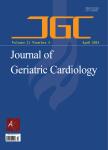One-year survival in recipients older than 50 bridged to heart transplant with Impella 5.5 via axillary approach
作者机构:Division of Heart Failure and TransplantMayo Clinic in FloridaUSA Department of Cardiothoracic SurgeryMayo Clinic in FloridaUSA
出 版 物:《Journal of Geriatric Cardiology》 (老年心脏病学杂志(英文版))
年 卷 期:2023年第20卷第5期
页 面:319-329页
核心收录:
主 题:One approval transplant
摘 要:BACKGROUND Optimizing patients with advanced heart failure before orthotopic heart transplantation(OHT), especially in patients greater than 50 years old, is imperative to achieving successful post-transplant outcomes. Complications are well-described for patients bridged to transplant(BTT) with durable left ventricular assist device(LVAD) support. Given the lack of data available in older recipients after the recent increase in mechanical support use, we felt it crucial to report our center’s one-year outcomes in older recipients after heart transplantation with percutaneously placed Impella 5.5 as a BTT.METHODS Forty-nine OHT patients were supported with the Impella 5.5 intended as a bridge between December 2019 and October 2022 at Mayo Clinic in Florida. Data were extracted from the electronic health record at baseline and during their transplant episode of care after Institutional Review Boards approval as exempt for retrospective data collection.RESULTS Thirty-eight patients aged 50 or older were supported with Impella 5.5 as BTT. Ten patients underwent heart and kidney transplantation within this cohort. The median age at OHT was 63(58–68) years, with 32 male(84%) and six female patients(16%). Etiology was divided into ischemic(63%) and non-ischemic cardiomyopathy(37%). The baseline median ejection fraction was 19%(15–24). Most patients were in blood group O(60%), and 50% were diabetic. The average duration of support was 27 days(range 6–94). The median duration of follow-up is 488 days(185–693). For patients that have reached the 1-year follow-up timeframe(22 of 38, 58%), the 1-year post-transplant survival is 95%.CONCLUSION Our single-center data provides awareness for using the Impella 5.5 percutaneously placed axillary support device in older heart failure patients in cardiogenic shock as a bridge to transplantation. One-year survival outcomes after heart transplantation are excellent despite the older recipient’s age and prolonged pre-transplant support.



